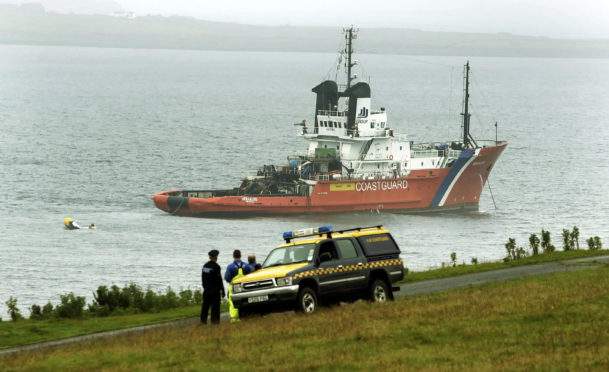The inquiry had the benefit of first-hand evidence of some of the survivors.
He managed to take a deep breath before submersion, and got the seal off the window and push it out – enabling him to swim to the surface. He eventually ended up in the first life raft.
He and colleague Samuel Bull, who later committed suicide, and another passenger administered CPR on Gary McCrossan throughout the time spent in the life raft.
Mr Bower told the court that Capt Miglans insisted that he be the last person to be winched free. As for Mr Bell, Mr Bower said that “if I met the man who got the life rafts out, I’d shake his hand”. He has since worked offshore again.
Offshore scaffolder Paul Sharp was also able to take a breath before submersion and escaped through a window. He was followed by another passenger, Neil Ritchie.
Mr Sharp ended up in the group in the water until rescued. At first, only one side of his life jacket inflated but he was able manually to fill the other half.
He complained that the beacon locator and light on the life jacket was not working. He suffered minor injuries to his head and hand but suffered a haematoma two days later.
He has since suffered from PTSD and anxiety and still suffers from nightmares. Eighteen months after the accident he had a test flight in a helicopter, but after it decided that he would never get into one again.
Meanwhile Mark Martin, who was an offshore construction supervisor and had spent all his working life offshore, is also still struggling to come to terms with what happened.
He may have exited from the cockpit, but ended up in the group in the water.
He complained that his survival suit was full of water, meaning the waves were going right over the top of him and he had great difficulty breathing.
He said that the two pilots threw a rope towards him but he was unable to catch it and drifted away. He was very cold, started to cramp up and was going into hypothermic shock. Gulls were attacking him, trying to peck at his eyes and ears.
When being winched up, the winchman cut the suit to allow the water to escape.
Mr Martin is still seeing a mental health therapist, has flashbacks and problems sleeping and, as for the future, he thinks that he is not employable, telling the court: “I can’t see that far forward”.
- October 20, 2020
- October 20, 2020
- October 19, 2020
- September 14, 2020
- September 11, 2020
- September 10, 2020
Neil Ritchie was employed as an offshore wireline operator. He had been working offshore for eight years. After the submersion he managed to reach an air pocket and take a couple of breaths.
He followed another passenger, possibly Mr Sharp, out of a window. He was in the water until rescued. As to the effects of the accident, he thought that none “of us is the same since”.
One of his first decisions was not to go offshore again, not least because he had an 18 month old son.
Toby Croft is an electrician. On submersion he had no time to take a breath, but followed another passenger out of a window having elbowed it out himself.
Again, he ended up in the water until his rescue. He suffered broken ribs and still has back problems which can result in him being bedridden for a few days at a time. Mentally, he felt that he was “doing alright”, but has not worked offshore since and said: “I won’t get into a chopper again”.










